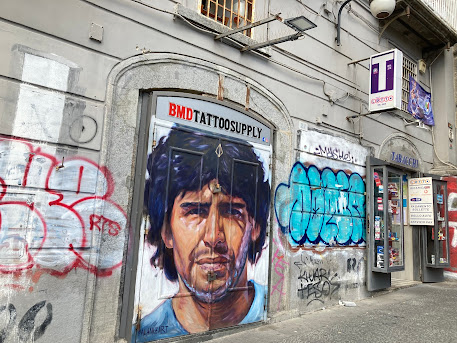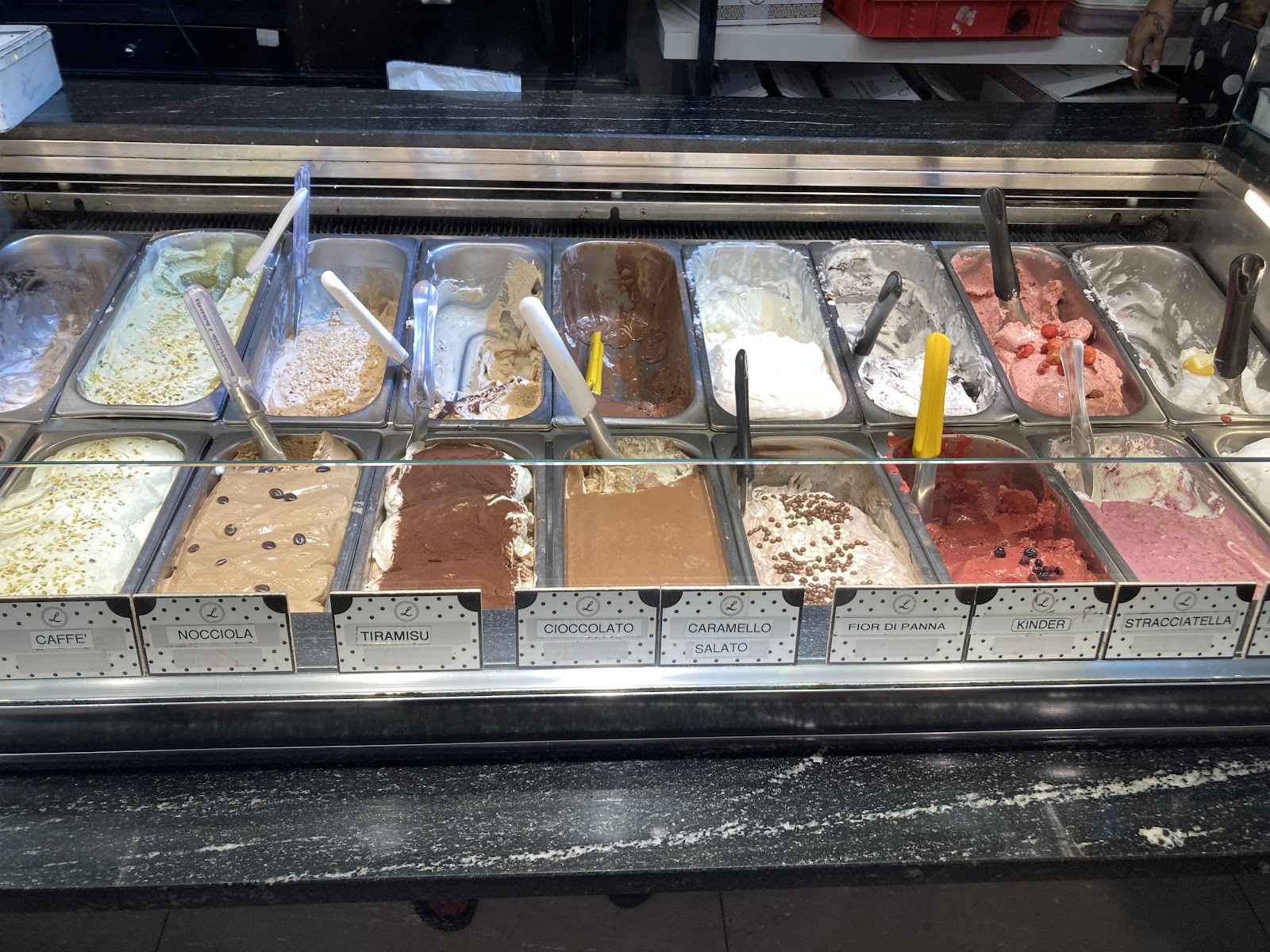Italy: here we come!
May 20 we were picked up by the Emirates Limo around 4 30 pm after a day of packing and setting up the house for vacancy.
The alarm system gave us some grief for the two days before we left, however, much better to have the alarms while we are at home and can attend to them. So wireless sensor units batteries replaced in incident No1 and comms restored after an urgent ADT callout and a new back up battery in place after incident No 2.
Auckland was suffering some heavy rain as we departed AIA later
that evening, no damage at our house apparently but some flooding in St Heliers as we found out when Scott rang to check whether Tim and Lisa could borrow our
dehumidifier to help sort some water impacting their basement.
We’d chosen once again to fly Business Class with Emirates.
The 17 hour leg to Dubai is not very attractive in Economy Class for a couple
of 75-ish travellers. It is in fact a great way to travel, a little less of the
“Imposter Syndrome” felt this year and the usual stunning service gave a great
experience and a good start to the holiday. Flight was great, some good
sleeping achieved and some very nice food and wine enjoyed in moderation.
A very short stopover in Dubai, no time to get to a lounge
and no real need to do so. The next leg to Naples with fly Dubai was around 6 hours, still in Business, but a little more laid back than the big sister airline. Service was great, and another very nice
flight.
The flight passes by Mt Ararat of biblical fame, Noah’s Ark
reputedly came to rest there after “The Flood’. Good views across Turkey,
Greece, the Balkans and southern Italy as we fly into Napoli.
Naples
Naples has a bit of a “danger spot” reputation for tourists. We found the rep is probably not deserved, but the city does project a very grungy image. We chose to stay in the old city centre, very near the Port'Alba, entry to the old walled city.
Lots of graffiti and tagging, lots of rundown buildings and churches, with uneven pavements and roads.
Our check-in time at Hotel Piazza Bellini was 2 00 pm, so our hot and sweaty arrival just before that was great timing.
We did a quick refresh after more than 28 hrs travelling, then headed down to Piazza Dante for a coffee and to find an ATM. Espresso with milk was certainly coffee, but didn’t quite meet the usual NZ standard, pretty cheap at 4 Euro for a couple of coffees. We then headed off down Via Toledo, one of the main shopping Streets to look for an ATM. We arrived with 65 Euros left over from last year’s travel, and that certainly was handy. The Airport bus was cash only, and the Metro easiest with cash for our Euro 50 cent fares.
There weren't many banks on the main shopping street, but we eventually found Banco Napoli to replenish the coffers. Wise card and credit cards are good for accommodation and meals, but for the small purchases it’s largely a cash society here. Then time for a drink. The local beer for me and a limoncello spritz for Ann.
At this stage the travel fatigue was definitely setting in, so we looked for an early meal before we headed to bed. This is Napoli, the true home of Pizza and we visited Di Matteo Pizzeria, graced many years ago by one Bill Clinton. The pizza was a bit bigger than anticipated, so wasn’t devoured in its entirety. Soft base, in the local tradition, and very tasty. This time another local Napoli beer for me and some chilled red wine for Ann.
When Italy was formed about 140 years ago from all the
kingdoms and municipalities, the power base was dominated by the larger
northern cities, the south has always struggled to get its fair share of the
national cake. Hence the many rundown buildings and churches.
Our street food started with nibbles of bruschetta, buffalo mozzarella, taralli napoletani (flour, pepper, lard and almond) circle shaped biscuits and olives. All exceptionally tasty. Ann in particular became quite addicted to the taralli.

Then came pizza, invented in Naples, with a soft spongy base. Not to be eaten with a knife and fork, more to be folded over and into a cone-shaped roll. Margaretta pizza was invented for the visiting queen of the same name, and reflected the colours of the newly formed Italia, mozzarella, basil and tomato for the white, green and red of the Italian flag.
This was followed by a slice of fried Macaroni cheese. Frying up
leftovers is pretty common in the waste not, want not culture.
Limoncello, another local, was next, including a tour of the
small family-owned manufacturing area, very small, just the back of the shop.
Sweets for the next course Baba au Rhum, spongecake soaked in rum and Sfogliatella riccio, fried crunchy pastry with a ricotta centre which would be my favourite.
To finish was a double taste of gelato, and a resolution not to have breakfast before such an event in the future.For the afternoon we headed to the archaeological Museo, a short walk up the road from our hotel. Many statues and sculptures and frescos from all over Italy, reflecting 2500 years of prominent Greeks, Romans, gods and goddesses. Also a very interesting section on Alexander the Great and his travels and influence in post Roman times. Three sculptures that caught the eye were Dionysis, the god of wine with an accolyte, Atlas, bearing the weight of the world, and an exhausted Hercules after many labours.
After many hours exploring Naples we found a bit of respite from walking in the large open courtyard of Hotel Bellini, and also a cold beer and a Peach Bellini.
Our booking for Sansevero Chapel Museum was 6 00 pm, a 10 minute walk away. This very ornate chapel was built in the late 16th century by Giovan Francesco di Sangro but completed by Raimondo di Sangro who put together the surviving design and pieces of art and sculpture that fill the chapel.
The centrepiece of the display is the marble statue of The Veiled Christ, laid out after his crucifixion. It is a stunning and quite moving artistic creation. All carved out of one piece of marble, the veil is almost transparent and the veins on the face and stigmata make the image very real.
The prince was an inventor, a Patron of the Arts, an alchemist, and a man of letters, publisher and Grand Master of the Freemasons in the Kingdom
of Naples. He was described by his contemporaries as “not an Academic, but more
of an Academy”!
After the excesses of our mornings street food, dinner was simply an entrée of meatballs from L’Etto next door to our hotel.
Pompeii
On Day 2 after a lovely breakfast provided at Bellini, we headed off to Piazza Dante, down into the Metro, and to Central Station to catch the train to Pompeii. It doesn’t take long to get back into the swing of all this multi-faceted public transport.
Pompeii was a seaside town, founded around 600 BC serving around 20,000 residents. The model on display in the Archaeological Museum we saw the other day, shows it covered an area of about 5 km by 8 km. It was predominantly a port with a mainly low to middleclass population, about 30 km south of Naples. As with Naples, Mt Vesuvius was quite dominant in the background of the town and quite a brooding presence as we walked around the ruins.
Many of the towns residents fled when there was a series of
earthquakes prior to the catastrophic eruption of Mt Vesuvius in 79 AD. The
mountain erupted early afternoon on August 24 , an 18 hr eruption sent ash,
dust and rocks about 20 km into the air, and the northerly wind blew white ash
onto the town collapsing many roofs and floors but leaving walls standing.
About 12 hours after the initial event the eruption changed, firing out a
superheated avalanche of ash pumice and gas. This pyroclastic flow rained down
on the nearby town of Herculaneum, burying it under 60 feet of hot material.
Another flow around 6 hours later headed south to complete the destruction and
burial of Pompeii.
The site lay undisturbed until accidentally rediscovered in 1599, and archaeologists started excavating around 1748. Works are still progressing today.
The site has provided a wealth of information on Roman life, and our self-guided walk took in partially restored and exposed areas.
Some wonderful mosaics, frescoes and scupltures have survived.
The basilica, the forum, the men’s baths, several merchants' houses, fast food eateries, the brothel and mills and bakeries were all explored. The brothel walls had frescos which indicated possible options for customers, but the beds looked pretty restricted and uncomfortable!
Our guide on the street food tour had recommended a restaurant Hosteria Bencott, close to the end of the street food tour on Via Cisterna dell’olio, so that was our venue for dinner. After a delicious prosecco with the usual complimentary aperitivo, we dined on some very nice seafood entrees and both opted for a steak for the main. Nice change from the pizza-dominated diet so far this week.














































